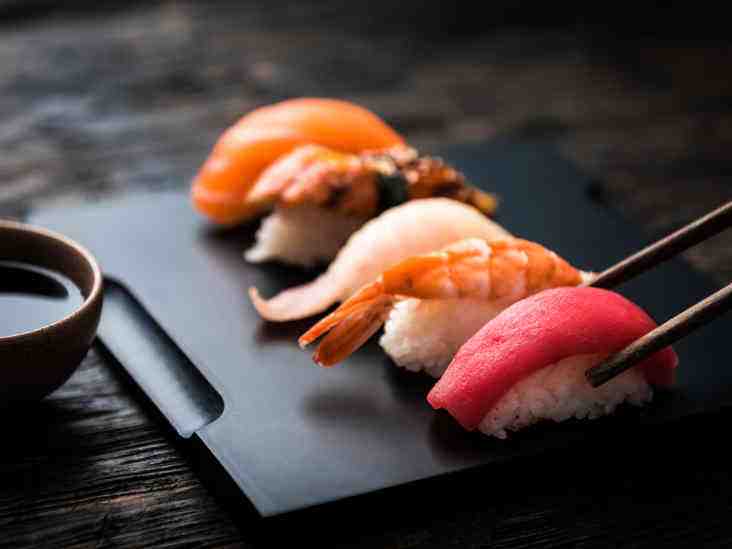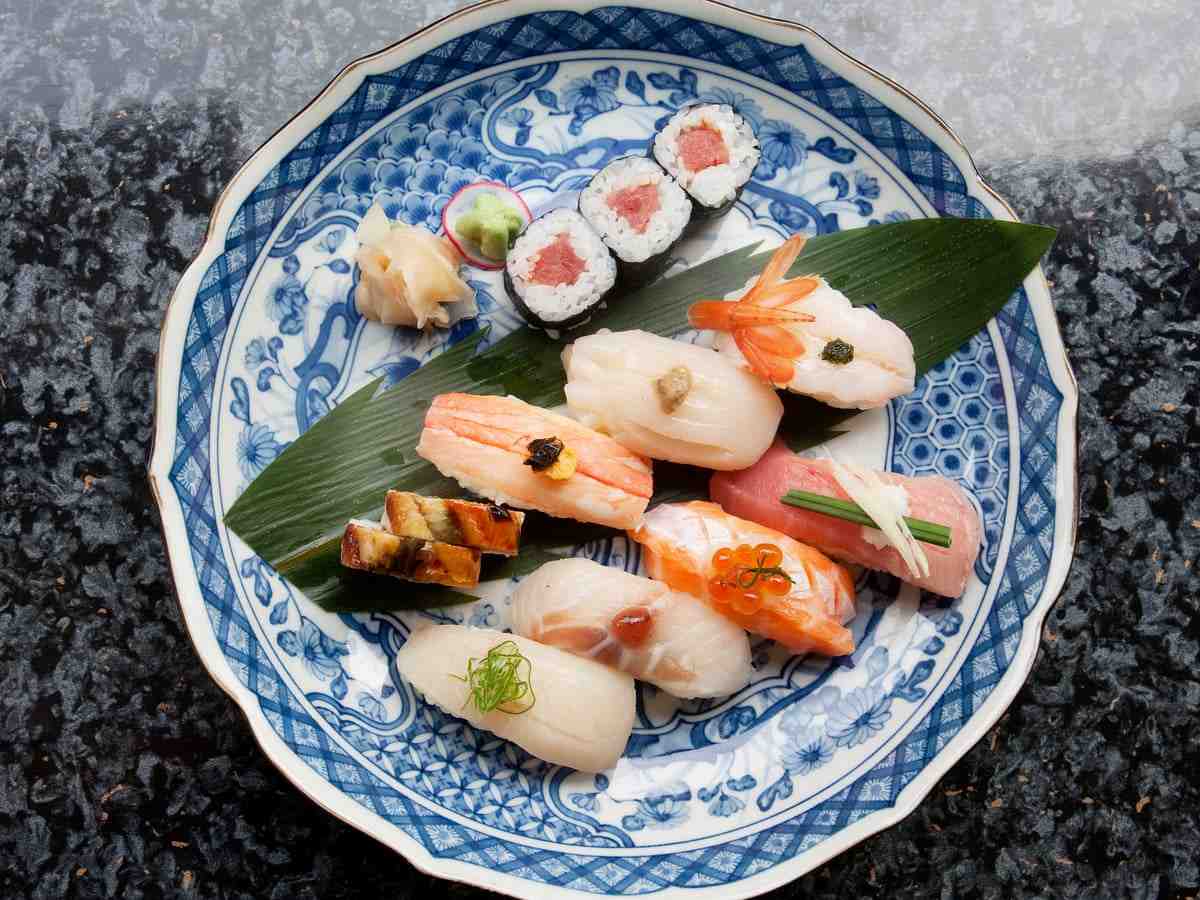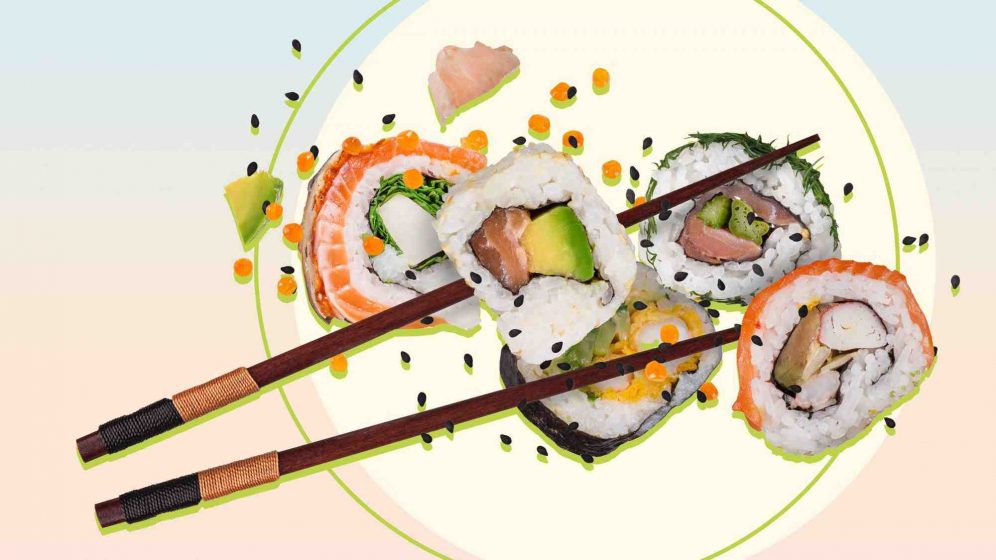Can I just buy raw salmon and eat it?

Dishes containing raw salmon can be a tasty treat and a good way to eat more seafood. However, it is important to be aware that raw salmon can contain parasites, bacteria, and other toxins that can be harmful even in small doses. Read also : Can you eat a raw potato?. Eat only raw salmon that has been stored and prepared properly.
Is sockeye salmon good for sushi? Sockeyes can be grilled, baked, steamed, smoked or roasted. It is also eaten raw as sushi or sashimi. It is higher in calories than pink salmon but lower than farmed Atlantic salmon. Fish is rich in protein, a building block needed for muscles and organs.
Is sockeye salmon good for sashimi?
Of the eight species of Pacific salmon, Sockeye (red salmon) has the strongest meat and is only second only to Chinook in terms of fat content. On the same subject : Which food Cannot be eaten raw?. These attributes make them a perfect choice for sashimi or tatami burnt.
Is sockeye salmon safe to eat raw?
But there are some important things to know about how to eat raw seafood to ensure food safety and the best quality! Sockeye salmon sashimi. Pacific salmon and tuna that have never been in contact with freshwater are generally safe to eat raw from the ocean.
Can you sashimi sockeye salmon?
The sockeye salmon orange red meat provides a delicious change from other varieties of fish. Sockeyes can be grilled, baked, steamed, smoked or roasted. It is also eaten raw as sushi or sashimi. It is higher in calories than pink salmon but lower than farmed Atlantic salmon.
Can you eat raw salmon from the grocery store?
Yes, you can eat raw salmon from high quality groceries if it has been frozen before. Read also : What meat can you eat raw?.
Can I use store bought salmon for sushi?
Can you use store-bought salmon for sushi? Store-bought salmon is acceptable for sushi as long as it has been previously frozen and labeled â € œsushi-gradeâ € or â € œsashimi-gradeâ € or â € œfor raw consumptionâ €. But farmed salmon, previously frozen, is also safe because farmed salmon is not typically susceptible to parasites.
Can you eat salmon from Walmart raw?
Can I eat raw fish from the grocery store? Yes. It is advisable not to skip it before consuming it as raw salmon sushi can contain parasites, germs, and bacteria. These parasites and bacteria are unsafe for your health as they can cause anisakiasis {foodborne illness} and food poisoning.
What kind of salmon Do you eat raw?
Look for packaging that specifies “farmed Atlantic salmon” or “farmed Alaska salmon.” They are typically labeled “safe for raw consumption” as well. On the same subject : Why do I feel weird after eating sushi?. You can also see “sushi-grade” on some labels, but The Grocery Store Guy says this is just marketing language.
Can grocery salmon be eaten raw?
Yes, you can eat raw salmon from high quality groceries if it has been frozen before. “Sushi grade” has no legal definition. It’s just up to the grocery store to tell if something is safe to eat raw. But salmon can contain parasites, so buying frozen beforehand ensures that some parasites are killed.
Why don’t we get sick when we eat sushi?

The first reason is microbial: when cleaning raw fish, it is easier to remove intestines full of bacteria that could otherwise contaminate the meat with pathogenic microbes. On the same subject : Can sushi give you worms?. (Note that easier doesn’t mean there are never germs that contaminate meat; Salmonella outbreaks have been traced to sushi.)
Why don’t people get sick of eating sushi? raw meat. And essentially the answer comes in its entirety for the smallest reasons: bacteria. This can be upsetting, but the types of parasites and bacteria that crawl around rough land animals are much more toxic to humans than those found in fish.
Will I get sick if I eat sushi?
It is possible to get an infectious disease when eating raw fish in sushi or sashimi. They can be caused by a worm, such as anisakiasis, or bacteria, such as Salmonella or listeriosis. Many of these infections can cause digestive symptoms, including diarrhea, nausea, and vomiting.
What are the odds of getting sick from sushi?
Slow down your roll – the odds of getting a parasite from eating sushi are unlikely, doctors assure. Raw fish lovers have been hit by a wave of unrest recently when a report revealed that anisakiasis, a disease caused by parasitic food eaten by parasites, is on the rise in Western countries. .
How do you know if you get sick from sushi?
So here are 5 symptoms to pay special attention to when you feel you have food poisoning:
- Blood in your stool or urine.
- Frequent vomiting leading to severe dehydration.
- Fever with a temperature above 102 degrees.
- Blurred vision.
- Muscle weakness or numbness.
How does raw fish in sushi not make you sick?
Also, any raw fish you consume in a sushi restaurant is caught in cold waters and frozen before eating. “It kills encysted worms and other parasites,” says Tauxe. Unfortunately, freezing does not kill E. coli parasites and most of the harmful microorganisms found in meat, says Muller.
How does Raw sushi not make you sick?
Freezing is important, says Tauxe, because it kills any potential worms or other parasites that may be in the fish. As for meat, freezing does not kill E. coli or any other microorganisms that can make you sick – but the high heat used in cooking will.
Is raw fish in sushi safe to eat?
Raw fish poses a risk, says Patton. â € œSushi may contain parasites, as well as bacteria and viruses.â € Stories of worms in sushi may sound like urban legends, but it can happen. Heat can kill parasites in fish, but this is not helpful for most raw sushi.
How much sushi can you eat without getting sick?
According to a registered dietitian, healthy adults can safely consume 2-3 sushi rolls, which means 10-15 pieces of sushi a week. However, the statistics are different for the elderly, pregnant women and others with compromised digestive system.
How can you eat sushi without getting sick?
The FDA has recommendations for the transportation and storage of sushi fish. It should also be frozen before preparation. Fish must be frozen to minus 4 degrees Fahrenheit for a minimum of seven days before being used in food. Freezing fish flash at low temperature kills parasites and prevents infection.
How much sushi can you eat without getting mercury poisoning?
According to CNN, eating sushi more than six times a week can lead to mercury poisoning. Mercury is a heavy metal that can cause severe neurological problems. Mercury exists at high levels in tuna (especially bluefin), mackerel, yellow-tailed deer, swordfish and bass.
Why do I get diarrhea after sushi?

Raw and uncooked fish may contain roundworm larvae called Anisakis. The larvae do not live long in humans. But while they are present, they attach to the lining of the stomach and small intestine, where they can cause sudden abdominal pain, nausea, vomiting and diarrhea.
How likely is it to get tapeworm from sushi?

Thankfully, it is incredibly rare to catch a parasitic infection by eating sushi or sashimi in Australia. There has been only one documented case of infection by a close relative of a fish worm (Pacific broadbird), and one case of Anisakis infection.
How common are sushi parasites? Anisakis worm in a salmon fillet. The prevalence of these worms has greatly increased. The next time you eat sashimi, nigiri or other forms of raw fish, consider doing a quick check for worms, say scientists funded by the National Science Foundation.
Is it common to get worms from sushi?
The next time you eat sashimi, nigiri or other forms of raw fish, consider doing a quick check for worms. A new study conducted by the University of Washington finds dramatic increases in the abundance of worms that can be transmitted to humans who eat raw or overcooked seafood.
What happens if you get worms from sushi?
What are the signs and symptoms? Signs and symptoms of anisakiasis include abdominal pain, nausea, vomiting, abdominal distension, diarrhea, blood and mucus in the stool, and mild fever. Allergic reactions with rash and itching, and infrequently, anaphylaxis may also occur.
Can you get worms from sushi?
Doctor’s answer. Anisakiasis is a parasitic disease contracted by an infected seafood that is eaten raw or marinated. This is a type of roundworm that can be collected by eating sashimi, sushi, and ceviche.
What are the odds of getting a tapeworm?
You will probably never have one. Less than 1,000 people in the United States get them a year. It is extremely rare to take one of your pet. And if you take the right steps to cook meat, you shouldn’t take one of them either.
Is it hard to get a tapeworm?
Humans can get these worms after eating the uncooked meat of an infected animal. This includes infected pork, beef or fish. Dogs and cats can also have the fold, but their infections rarely spread to humans. Dogs and cats often become infected after ingesting parasitic flea-infested fleas.
How common are tapeworms in humans?
Tapeworms can also infect humans, although it is not a common infection. The Centers for Disease Control and Prevention (CDC) estimates that there are fewer than 1,000 new worm infections in humans in the United States each year. Tapeworms are flatworms that can live in the gut.
Can you get a tapeworm from eating sushi?
And the CDC warned, “The risk of being infected with the Japanese tapeworm parasite is most prevalent when consuming raw or undercooked fish, particularly in dishes such as sushi, sashimi and ceviche.” The CDC says that the parasite and the larvae that are buried deep in the salmon muscle can be destroyed when the fish is …
What happens if you get worms from sushi?
What are the signs and symptoms? Signs and symptoms of anisakiasis include abdominal pain, nausea, vomiting, abdominal distension, diarrhea, blood and mucus in the stool, and mild fever. Allergic reactions with rash and itching, and infrequently, anaphylaxis may also occur.
Is sushi high in mercury?

Most of the main sushi-type fish contain high levels of mercury and should be avoided completely or eaten very rarely. If you have more questions about sushi, you should talk to your healthcare provider to get their recommendation.
How Much Sushi Is Too Much Mercury? According to CNN, eating sushi more than six times a week can lead to mercury poisoning. Mercury is a heavy metal that can cause severe neurological problems. Mercury exists at high levels in tuna (especially bluefin), mackerel, yellow-tailed deer, swordfish and bass.
Does Raw sushi have mercury?
“All fish contain some level of mercury, but most of the fish used in sushi and sashimi rolls are large fish, such as tuna, yellow-tailed deer, blue pen, bass and lobster, and have the highest amounts. of mercury, “Dr. .
How likely is mercury poisoning from sushi?
According to CNN, eating sushi more than six times a week can lead to mercury poisoning.
How much mercury is in sushi?
Six pieces of sushi from most restaurants and shops contain more than 49 micrograms of mercury. This is the amount that the Environmental Protection Agency considers acceptable for weekly consumption over a period of several months by an average-weight adult, which the agency defines as 154 pounds.
What sushi is high in mercury?
According to the Natural Resources Defense Council, the fish with the highest levels of mercury (containing more than 0.5 parts per million) are bluefin tuna, yellowfin tuna , swordfish and mackerel.
Is there a lot of mercury in sushi?
Many of the fish used to make sushi are high in mercury, a neurotoxin that can be dangerous if you are pregnant or planning to become pregnant. But that doesn’t mean you’re stuck with an edamame bowl alone! Eat sushi made with fish that is lower in mercury.
What sushi is low in mercury?
Go easy on (or avoid) all forms of tuna, including bluefin, yellowfin, bigeye and albacore. The same goes for mackerel, sea bass and yellow tails. Better choices of sushi and sashimi (with a lower mercury content) include salmon, eel, scallops, squid, trout, octopus, sea bass and shrimp.
What sushi is low in mercury?
Go easy on (or avoid) all forms of tuna, including bluefin, yellowfin, bigeye and albacore. The same goes for mackerel, sea bass and yellow tails. Better choices of sushi and sashimi (with a lower mercury content) include salmon, eel, scallops, squid, trout, octopus, abalone and shrimp.
Comment faire nigiri crevette ?
Preparation
- Moisten your hands and shape the rice into small flat balls.
- Place shrimp on top lengthwise.
- Squeeze lightly so that the shrimp adheres well and conforms to the shape of the rice.
- Decorate with Nori straps.
Quel saumon pour sushi maison ?
Have your sushi made, think of the fresh salmon heart from your Grand Frais fishmonger! Sold in a tray of about 250g, without skin and without edges, it is ready to cook … and to taste!
Sources :
